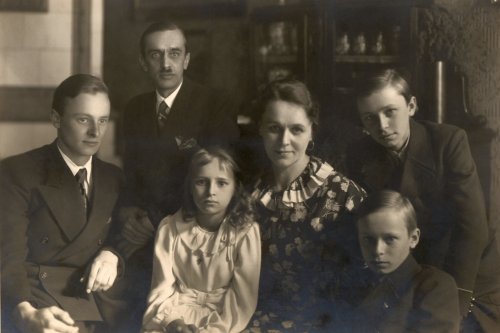The Lesser Poland area witnessed many examples of Poles helping the Jewish community during the German occupation. Even though, many years have passed since the Second World War, historians keep discovering new stories about individual Poles or entire Polish families which stood against the Holocaust. One example of such bravery, is the story of the residents of the Gorlicki county, who saved a young, Jewish girl.
That girl was Sabina Honigwachs, born May 3rd, 1921 in Gorlice, where she lived with her family. Her father, Faivel Honigwachs had passed away before the war, so she and her only brother, Hirsch were raised by their mother, Bluma. Prior to the war, Sabina attended a local school. Her mother and brother ran a workshop making suitcases, which was later still functioning for a short time in a local ghetto.
From giving food stamps, to hiding at a cemetery
Before the war even started, Sabina’s mother made friends with Helena Benisz and her family, living in Gorlice. Since the first few days of the occupation, Benisz was helping Bluma Honigwachs and her family of four: her children, Sabina and Hirsch, and her late husband’s sister and her little daughter, Hanna. Thanks to Helena’s aid, Sabina got a job at the Gorlicki local government, where she was issuing food stamps. For some time, this job was the main source of income for the Jewish family; however, in the summer of 1941, when a local ghetto was established by the Germans, the girl was fired. Fortunately, Jan Benisz, Helena’s husband came to their rescue and delivered food stamps to Sabina, to the ghetto. Food stamps, that were given solely to Poles. The Jewish girl would then take off her armband with the David’s star, illegally leave the ghetto and head to the local stores to get food. Upon her return, she divided the food between the three related families: Gevish, Brinbaum and Halberstam. Jan Benisz, who was helping Sabina and her family, was a Supervisor in the City Victuals Office during the occupation. At the same time, he was a soldier of the Polish Home Army, codename “Hawk”, serving as a quartermaster for the region. Even when Germans decided to eradicate the Gorlice ghetto, Jan Benisz continued to help the Jewish family. Several days before the ghetto was to be abolished, he prepared a hideout for them in one of the empty graves at the local cemetery. An empty grave, close to the cemetery’s entrance, was pointed to them by the parish’s rector, Kazimierz Litwin. What’s more, Benisz gave the Honigwachs family an address of a Polish family of Chwastowicze, where they could seek shelter if the hideout at the cemetery turned out to be too dangerous. In the end, the 5 Jews decided to hide with Chwastowicze, who took them in on the very same day. However; after just a couple of hours Sabina’s family made a choice to go back to the ghetto, fearing that the Germans might search for them.
Read the full text on the IPN's NextStopHistory website.
